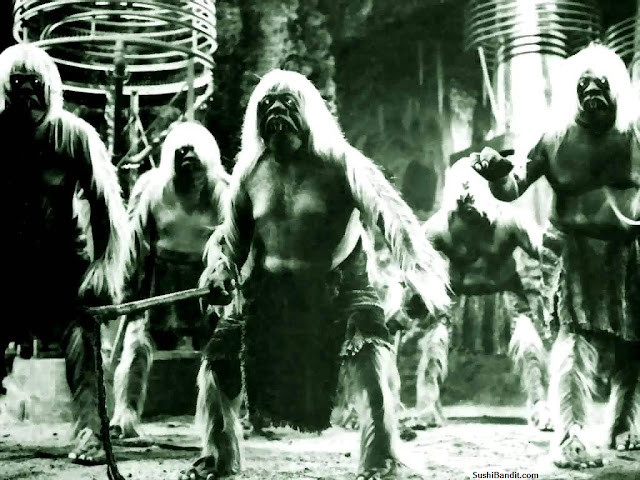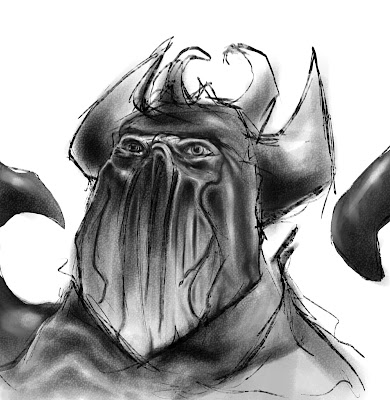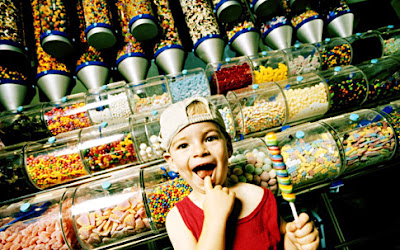“Realism”, it’s not just a genre of art. If you search the internet you will see the
word “realism” applies to many different fields – arts, politics, philosophy… Anyways, I guess I am writing to reflect some
things I have realised on this course.
Talking among the cohort I can feel a definite divide – Those
that have and those that have not. Have
what exactly you wonder? It’s hard to
define, but can be seen in our grouping in the team project.
One half of the class decided they didn’t want to work with
others and formed their own “
super groups”.
This causes problems… for everyone else.
It’s such a selfish and unprofessional approach, yet it was allowed only
adding to the divide. It’s making one
side more and more cynical and the other more confident. It’s basically the same with the allocation
of teaching – The [Insert students name here] simply get more encouragement and
attention from the tutors. It’s not
those guys that need the most help. Let’s
say that the groups doing the London project are the positive, “get-more-attention-y”
ones and the “left over crap” is doing the local queens building... Interestingly out of choice - possibly being
less ambitious and sub-dominant. I have
found in my team people are reluctant to take on responsibilities, I think
through possibly lack of experience and encouragement.
The tutors should be empowering these people, not ignoring them because
they are harder work or because they are less likely to immediately produce
work to entice the next batch of students.
 |
| Morlocks from the book "The Time Machine" - a fictional product of the divide in society |
Failed Diplomacy
It's worth noting that the term “
realism” when
applied to politics refers to the realisation that the gouverning bodies
and individuals are ultimately self-serving.
When team “pudding lane” (great name by the way) gave their presentation
there were ensuing discussions and constructive feedback on how to best go
forward with the project for at least ten minutes with all the tutors. When our team the “Dirty Ngons” (great name
by the way) made a presentation I personally had to ask for feedback and
critiques. Unfortunately (I can’t truly say
for what reason) the tutors seemed… bored, uninterested and our feedback was
under a single minute. On one hand I
think it’s great doing collaborative projects which will undoubtedly raise our profiles,
it would be a lovely experience too I’m sure.
But on the other hand moral is so damn low for the other half the class
that you guys should be making efforts not to show favouritism… Maybe learn the
faces of some students you’re not sure about… see what drives them, understand
their personalities.

My problem is that I have paid just as much for my education
as the members of team London – Showing no interest in other teams is
demoralising for them (but I guess the “Londoners” don’t care, right?). There have been many discussions and much
whining and bitching among this half of the class, while the other half demand tablet pens. The main issue is course delivery – It’s lacklustre
at best, with little to no teaching of theories and techniques… I often get the
feeling we are feeding the tutors with information (not the other way round). On the DMU foundation course I was
encouraged to experiment with frequent personal feedback, & taught skills
within Adobe packages (optionally). on this course I am encouraged…
Nothing. I guess I’m supposed to look
towards the students that get coverage and aspire to that? We all know the proverb “give a man a fish”? Well this is Chinese proverbs gone mad.
 |
| PS4 due for a Christmas release - Next gen is on the horizon - Are we prepared? |
The game industry and technology is constantly
evolving. You can’t use comparatives
that are ten years old like Half-life 2.
Sure it’s heralded as one of the best games in in the past decade, but it is
dated as fuck. In my opinion all of the
classes and the syllabus as a whole need a rethink. At the minute coming into lessons is a hindrance
to my learning – Not only are we showed very little and can learn more from a
video tutorial on YouTube, but the punctuality, organisation and attitude is a bit demotivating.
I said it this week talking in a group of others. I said I feel like I was scammed. This course on appearance
has great work to promote its self, and a course leader who is a strong/confident speaker. I naturally assumed that the quality of work
was a reflection of the course and its teachings. I remember coming in and talking to students
before I signed up. There was a guy
called Jake (I think it was Jake?) who wasn’t the strongest drawer, but he had
a piece of work that inspired me to join.
It was a canal pencil sketch from year 1. What impressed me was the improvement from
his first attempt to his final. I
thought “wow! If this course can teach
and inspire the change from pic A to pic B then there must be something magical
here”! Unfortunately I have come to the
realisation that he took a photo of the canal and copied it at home. Jake didn’t learn anything, copying from
photos in my own time I could produce a photo-realistic(ish) image – I don’t
really enjoy it and wouldn’t learn Jack Shit.
That’s not even art in my book.
If you’re a writer and copy other’s words what does that make you… a
scribe? If you are a teacher who can’t
inspire, inform and help students what are you… Too busy?
This blog is in no way a personal attack on any students or tutors. I quite like the tutors and can empathes
somewhat, and I am proud of team London.
Any problem is only a problem when you can’t overcome it. That’s why I write this. I’m considering trying to perma-work at
university, although I have often found the other students collectively annoying & disruptive. It’s not them it’s me – I have actually grown
to like the “alternative” crowd – or the dark underbelly, that are reserved and
disillusioned like me… I even got an invitation to a party last night. It’s easy to lump people together though. You, me, them, us.
Saigon, I’m still in Saigon
Realism of course also refers to an art discipline/style. I actually learned loads of art and stuff
before I joined this course (sorry for the bitter stab there). Realism was of course before cameras and is the art of realistically representing the surroundings around you. A good realist painter would also show a
reflection for their society (while an expressionist may reflect themselves or
their beliefs). This is a big thing when
it comes to concept/modern/digital art.
People like realistic light and shadow, proportions blahblahblah blah
complimentary colours, blahblah shiny surfaces & reflections. I subscribed to six months of Imagine FX and
they keep sending me the damn things.
Digital art is a bit of a shortcut – I’m hoping that one day the
internet will become sentient and try to destroy humanity and all we have left
is charcoal and rubble to draw with.
Seriously though there is an extremely small percentage of students who
even use their own digital brushes, although there are YouTube tutorials to
tell them how to do it! On top of that
there is a lot of paint overs (I can see through a lot of work), copies/interpretations
of other artists work and references without crediting the source. On the whole a lot of “monkey see monkey do”. There are some strong individual styles among
us, but also a lot of comfort zones. I
have seen one student in our year draw the exact same looking character a
hundred times. Another using the same
palette they had before coming here. Are
these the elite? I was hoping for the
next stage in game art – cutting edge techniques, solid foundations provided by
our syllabus, a variety of styles explored and encouraged… Nope that’s not happening.
I guess we all have different expectations. Looking at my own work I guess there is nothing
great or unique either. Am I being
hypocritical? Hypercritical? Yeah, of course I am, but I’m trying to state
my thoughts on quite an important issue.
In my review I said I was feeling that I was getting “over saturated”. Maybe it’s a personality thing, judging from
our mini-talks on our personal inspirations, others are genuinely enthusiastic
about artist A or artist B… I don’t feel
that.
 |
| A doodle I started but gave up on after 10mins today - People don't seem to care unless using popular techniques and over-rendering. Should I spend more time adding detail I personally don't need/want to see |
I went to the Louvre a while back and I stared at the Mona
Lisa for a long time, as an artistic chap I had no choice. I appreciated it a lot more than any other
version I have ever seen and is hard to compare to book prints and digital
images. I’m not a Da Vinci fanatic. I have a couple of books on Da Vinci, this doesn’t
mean that I want to copy his images or style.
Art for me isn’t something you can copy and comes from within. I’m not concerned about taking the fun out of
the work – I have done paid work for half my life. Earning a wage and art simply don’t go together
– Having to do something day after day removes the excitement, just look at war
vets who have done multiple tours – I bet they don’t get the fear like a rookie
would. In fact they may even become “
war hardened”, emotionally detached,
possibly broken.
 |
| A Kid in a Candy Store |
It’s the Way of The World
Being a post about realism I guess I should be noting that
the conditions mentioned are a pretty accurate reflection of life. Things aren’t always going to be ideal & the
grass is always greener. There will
always be sycophants and dicks like me who just moan without solutions. It’s easy to blame the conditions around you
or a situation you are in for your own discontent. At the end of the day
it
don’t really matter. Just get on
with it. I’m actually happiest absorbed with
learning stuff - be it 3D modelling, a new and interesting person/relationship,
or how to outwit opponents or the system in a video game. I might be a bit jealous with the attention
thing – I’m pretty sure the students that get the most attention are not getting
as much as they would like either. I
have also been in a few different jobs where it’s not how good or hard a worker
you, but how much the people with influence want you around. There is a whole world of back-scratching in
all jobs and industries and I think I have to learn an important lesson about
diplomacy myself. It’s actually going to
be a bit of a break-through posting this – I think after I spit this poison out
of me I can start to recover maybe. I
have wrote several posts but never sent, all with a similar theme – me losing
my way and being bitter n twisted. Well
I hope it’s come across a little less bitter and a bit more critical and
possibly informative.























